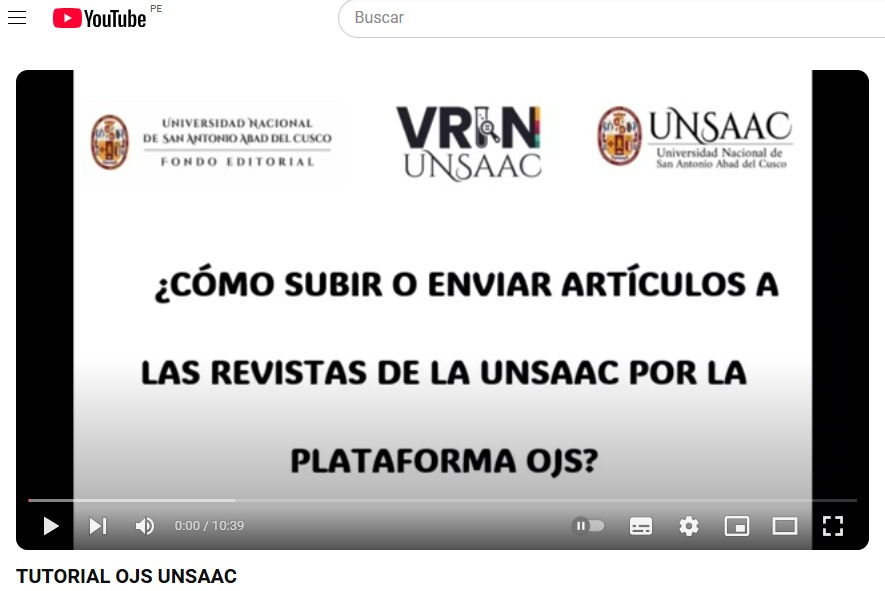Influence of Cereus vargasianus Cárdenas and Brasiliopuntia sp. (Cactaceae: Arborescent) on the Composition of the BTEs in the Pampas - Apurímac Riparian Corridor, Ayacucho Region
Abstract
The floristic composition of seasonally dry tropical forests BTEs in Peruvian territory is very varied, given the particularity of the biotic and abiotic components that make up the northern coast, the south-central Andean area and the eastern Amazonian slope. These attributes determine a clearly dissimilar composition and structure in reference to the forest species. This is the case of the dry forest that makes up the Pampas – Apurímac riparian corridor located on the northeastern departmental border of the Ayacucho and Cusco regions; the presence of Cereus vargasianus and Brasiliopuntia sp., cacti with a tree-like habit and new records for the region, would reinforce the particularity of a type of composition and structure unique in flora species of the BTEs of the inter-Andean type and the tropical area in general. The evaluation on 1000 m2 plots resulted in interaction with 13 woody species: Anadenanthera colubrina, Eriotheca vargasii, Ceiba aff. boliviana, Pseudobombax aff. marginatum, Tabebuia roseoalba, Handroanthus chrysanthus, Morisonia flexuosa, Juanulloa parasítica, Curatella americana, Erythroxylum squamatum, Ipomoea pauciflora, Luehea paniculata and Croton sp1. which reaffirms the uniqueness and conservation value of this plant formation.
Downloads
References
Brako, L., & Zarucchi, J. (1993). Catálogo de las Angiospermas y Gimnospermas del Perú. Monographs in Systematic Botany from the Missouri Botanical Garden, 45.
Campbell, P. (2002). Modified Whittaker plots as an assessment and monitoring tool for vegetation in a lowland tropical rainforest. Environmental Monitoring and Assessment, 76(1), 19–41.
Cárdenas, M. (1951). Dos nuevas especies de Cereus. Revista Succulenta, 34.
Foster, B. R., et al. (1995). Un método de transectos variables para la evaluación rápida de comunidades de plantas en los trópicos. Conservation International.
Gentry, H. A. (1995). Diversity and floristic composition of neotropical dry forests. En S. H. Bullock, H. A. Mooney, & E. Medina (Eds.), Seasonally Dry Tropical Forests (pp. 146–194). Cambridge University Press.
Linares-Palomino, R. (2004). Los bosques tropicales estacionalmente secos: II. Fitogeografía y composición florística. Arnaldoa, 11(1), 103–138.
MINAM. (2015). Memoria descriptiva: Mapa nacional de cobertura vegetal. Lima, Perú: Ministerio del Ambiente.
Ostolaza, C. (2014). Todos los cactus del Perú. Lima, Perú: Ministerio del Ambiente.
Palomino, F. (2017). Contribución a la flora vascular y vegetación de los valles secos interandinos de los ríos Torobamba (Ayacucho) y Pampas (Apurímac), sur del Perú. Revista Ecología Aplicada, 16.
Phillips, O. L., & Baker, T. (2002). Field manual for plot establishment and remeasurement (RAINFOR). Amazon Forest Inventory Network, Sixth Framework Programme 2002–2006.
Stohlgren, T. J., et al. (1995). A modified Whittaker nested vegetation sampling method. Vegetario, 4, 1–8.
Suclli, E., Paucara, J., & Tello, J. (2024). Diversidad de cactáceas en la región Ayacucho: Guía de campo. Field Museum, Guía N° 1748.
Ulloa Ulloa, C., Zarucchi, J. L., & León, B. (2004). Diez años de adiciones a la flora del Perú: 1993–2003. Arnaldoa (Edición Especial, noviembre de 2004), 1–242.
Zamora, C. (1996). Las regiones ecológicas del Perú. En L. Rodríguez (Ed.), Diversidad biológica del Perú (pp. 137–175). FANPE, GTZ–INRENA.
Copyright (c) 2025 QEUÑA

This work is licensed under a Creative Commons Attribution-NonCommercial 4.0 International License.
-
Eres libre de:
- Compartir : copiar y redistribuir el material en cualquier medio o formato.
- Adaptar : remezclar, transformar y desarrollar el material








.jpg)
.jpg)
.jpg)
